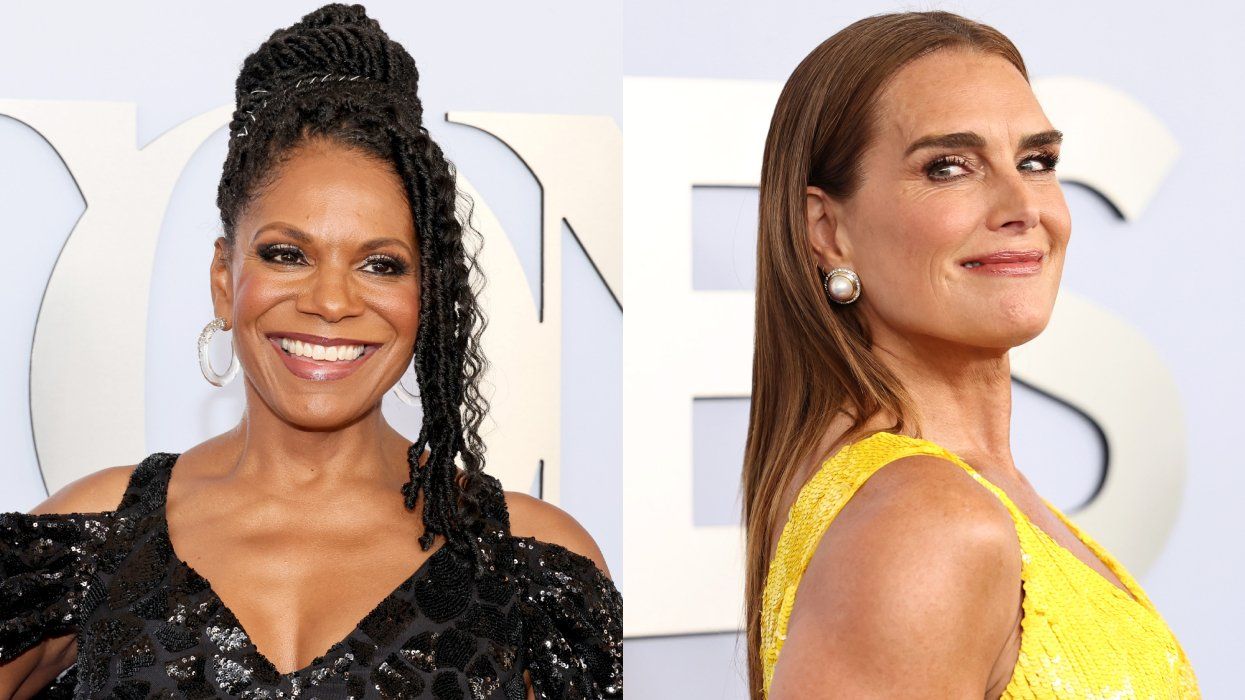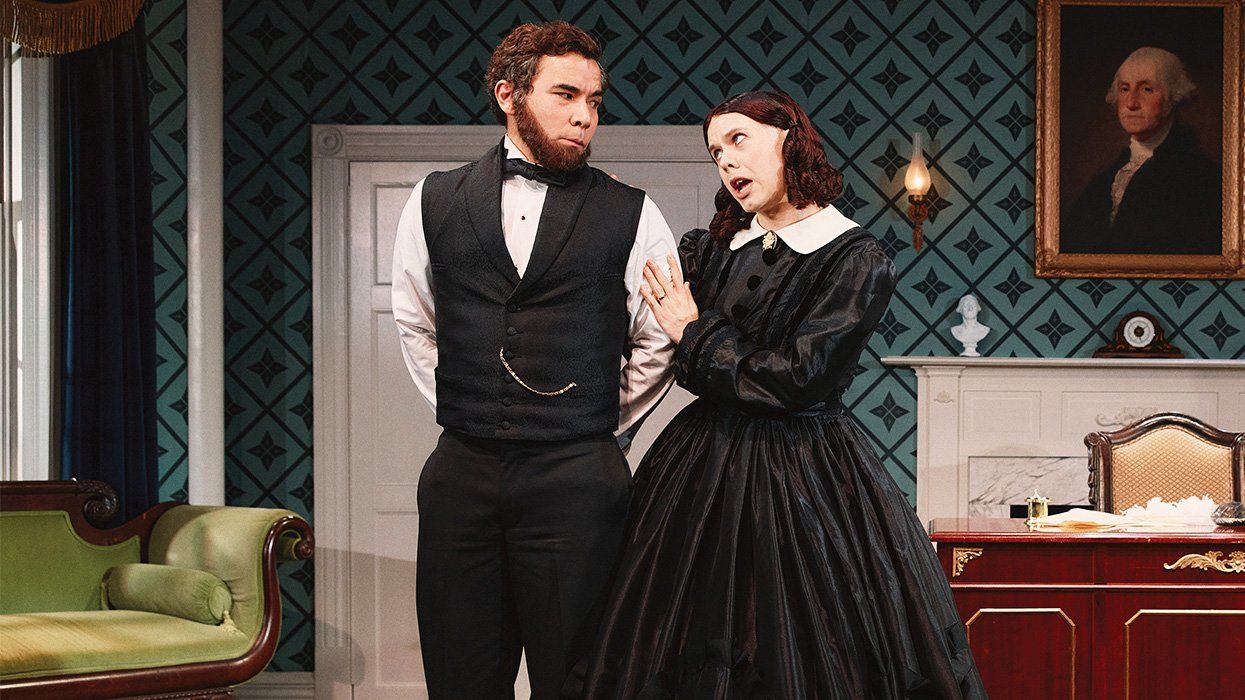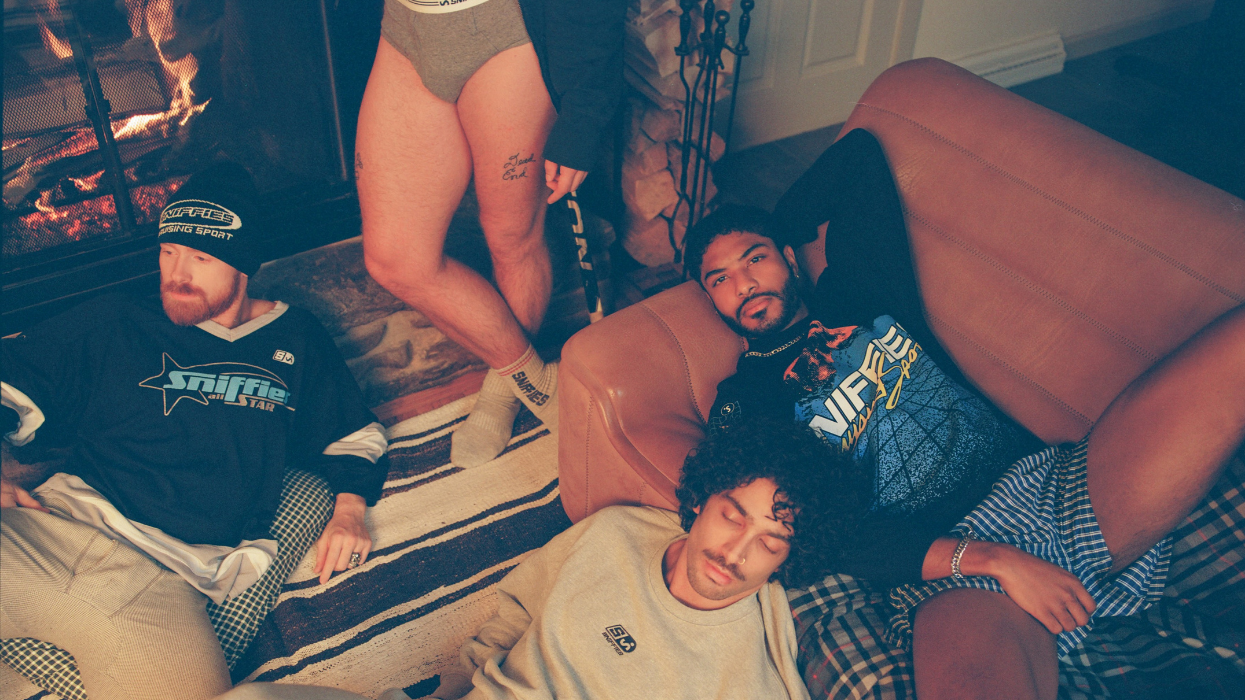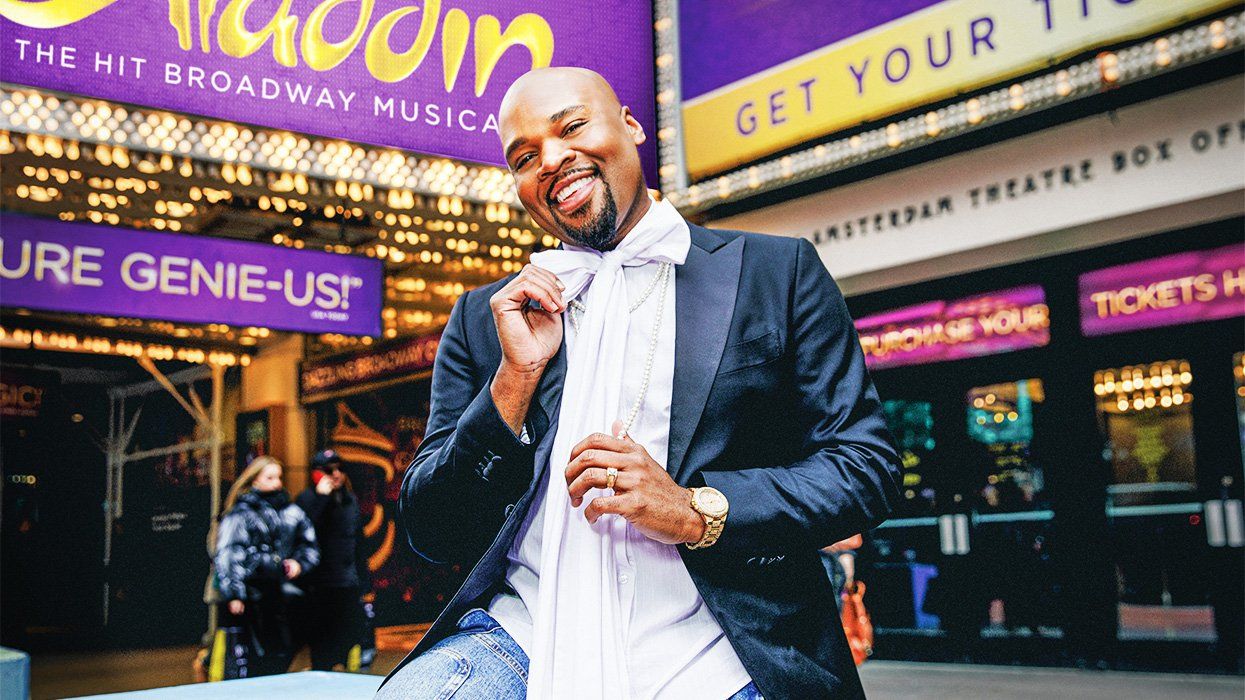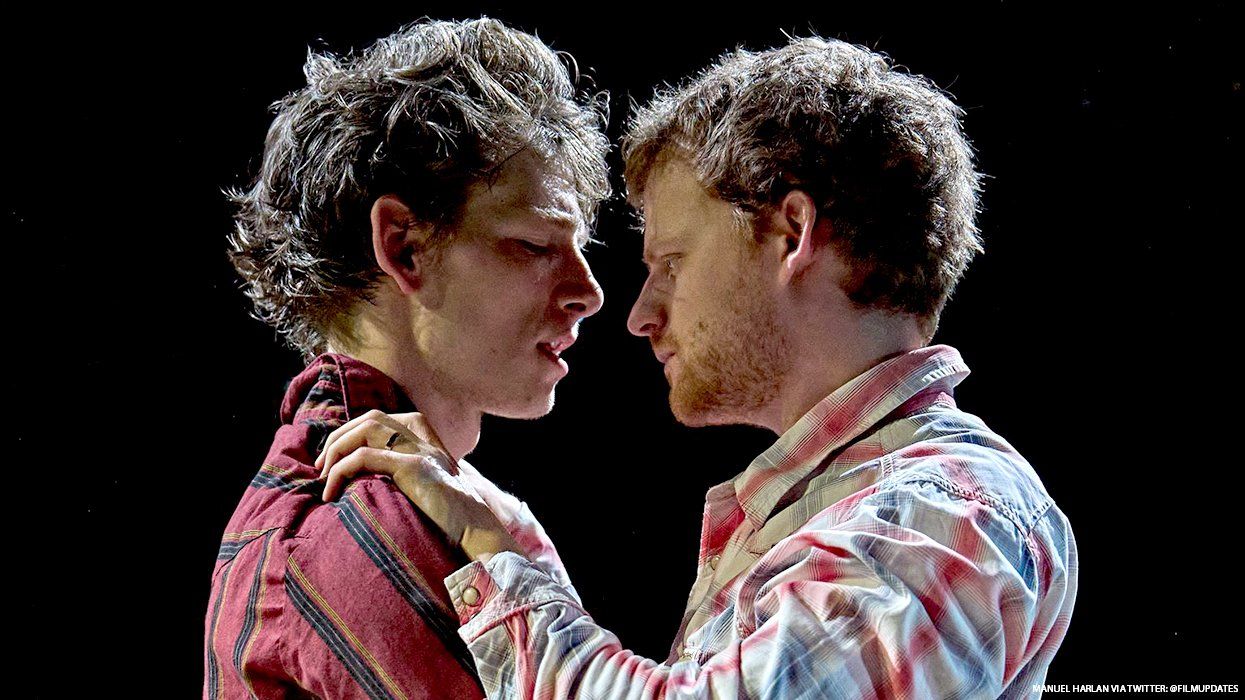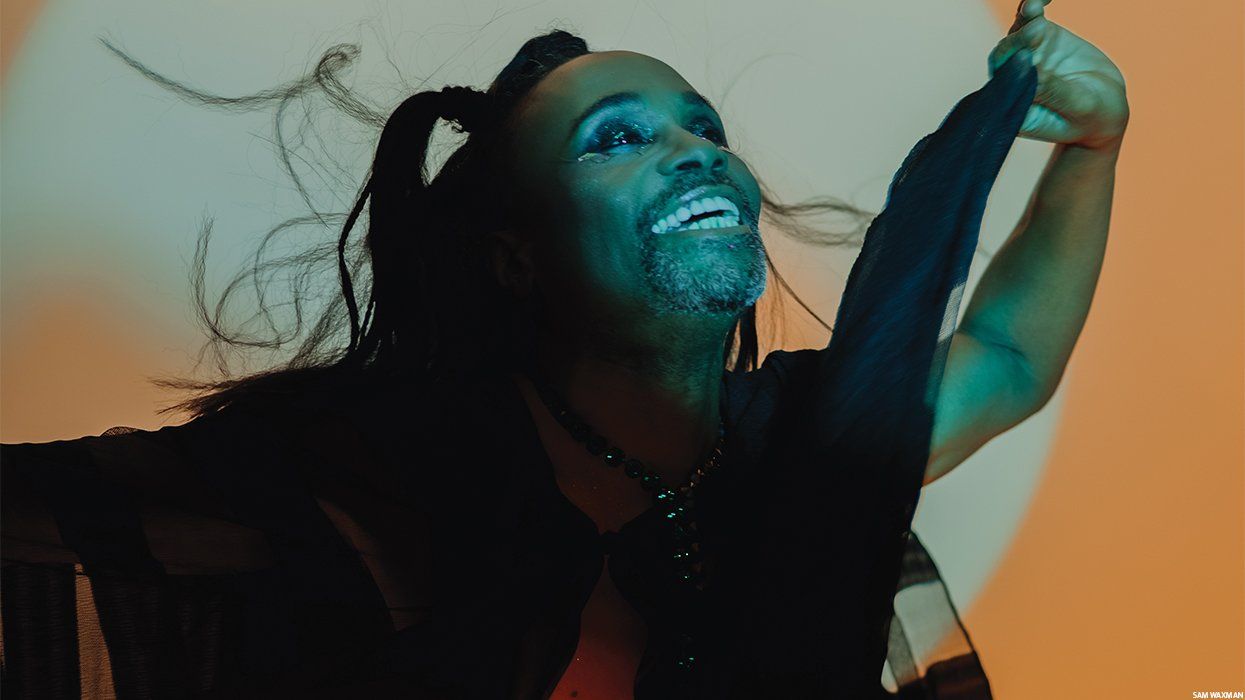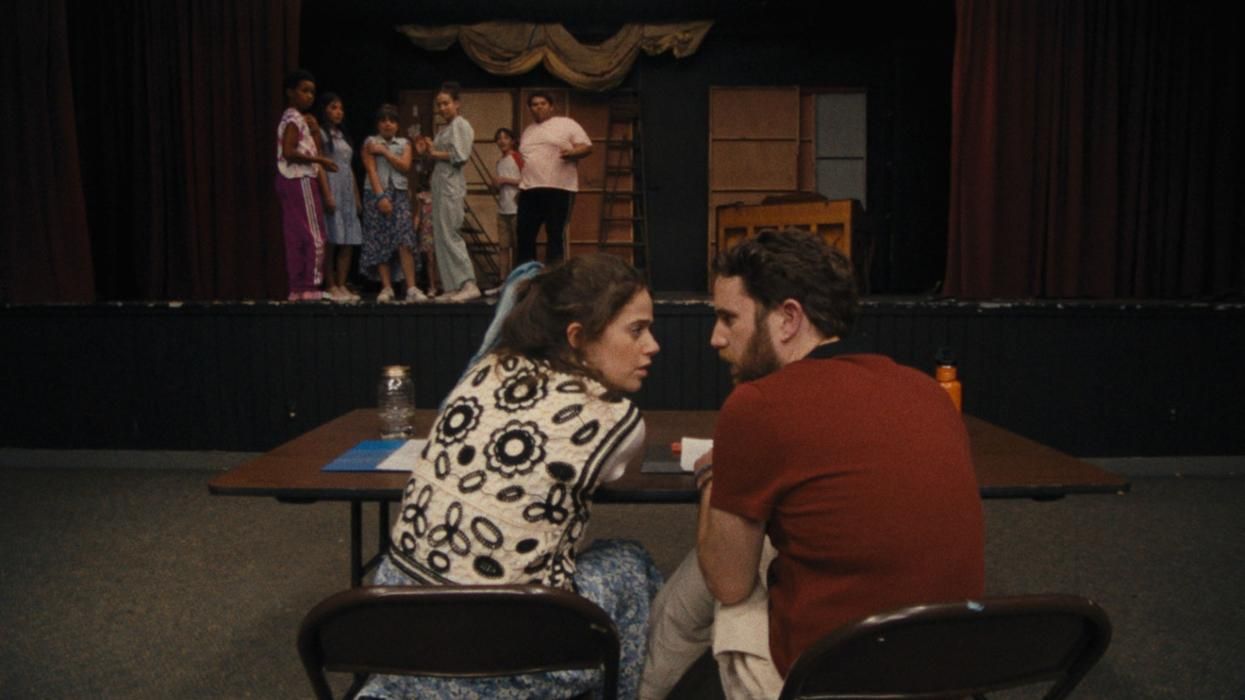Nicholas Van Young in "ETM: The Initial Approach" | Photography by Christopher Duggan
On the current season of So You Think You Can Dance, the TV dance competition now in the middle of its 11th season, two impressive tap dancers made it to the Top 20. The judges tend to like tap--just not enough to make everyone else do it. While ballet dancers attempt hip-hop and krumpers are forced into the fox trot, tap isn't a style in which contestants compete. (Producers say it's too hard.) Michelle Dorrance finds this appalling.
"If there's a show like that that's basically proselyting dance, it's really a shame to not have an American dance form on an American dance show," she says. The ballroom on the show, she points out, isn't strict ballroom--it's ballroom-lite, tailored by smart choreographers to a dancer's strength. There's no reason that tap--even a watered down version--shouldn't be represented. "That would have been a big boost for tap dance," she says, "It was a missed opportunity."
Dorrance, called "the brightest choreographer in tap today" in the New York Times, has emerged in the last few years as one of the form's most compelling ambassadors, participating in what many are calling a tap renaissance. At the American Tap Dance Foundations annual Tap Awards, held earlier this month, Dorrance walked away with the 2014 Hoofer award, while the late Gene Kelley was inducted into the Tap Hall of Fame.
This week, her company, Dorrance Dance, began a two-week run (through July 27) at the famed summer Jacob's Pillow dance festival in the Berkshires. Most companies only get one week. The extended presence may have to do with the fact that Dorrance grabbed the Jacob's Pillow Dance award last year, and spent June directing the Pillow's tap program for students from around the world. And because her company's previous engagement proved so popular.
Tap is often seen as an outlet for individual virtuosos. Dorrance can play that game, too, but what's refreshing about her work--and why audiences and critics are so excited about it--is the way she choreographs multiple performers with smart theatrical awareness. It's an outward-looking approach that considers space, style and even a sense of character, in addition to sound. (But don't imagine a Broadway showstopper; this stuff is more subtle, more human, more layered.)
"A lot of people will argue that tap is a solo form," she explains. "But I think it can be an incredible ensemble form, that's what we want to illustrate now."
The new work that Dorrance Dance premiered at the Pillow is titled ETM: The Initial Approach (ETM stands for electronic tap music). Part of the show is acoustic; part takes place on an amplified wooden platform, which uses a mini-converter to allow the tapping to be both percussive and melodic. The device was designed by Dorrance's collaborator, Nicholas Van Young, without whom, she says, the show couldn't exist.
Caleb Teicher, Greg Richardson, and Demi Remick in "ETM: The Initial Approach" | photo Jamie Kraus, courtesy Jacob's Pillow Dance
Moving from acoustic to electronic isn't quite as radical as when Bob Dylan made the switch, though Dorrance was amused by the comparison. She refers to the two as the "duality of the organic and inorganic." Experimenting with sonic distortion, she points out, is actually an important part of tap's history.
"None of our peers or even elders would say we're going outside the box," she explains, pointing out that when working with rock bands and DJs, amplification is necessary to give the feet a voice. (Dorrance often refers to elders and forbearers, mentors and masters--lineage is important to her--as well as giving shout-outs to colleagues, like Dormeshia Sumbry-Edwards and Warren Craft.) Plus, amplification allows audiences to more deeply understand the complicated rhythms.
The idea of duality also resonates with Dorrance because, as she puts it, tap dancers "embody two different positions as dancers and musicians." They provide their own accompaniment, responsible for both the visual and aural drama.
Thanks to the spotlight shown on Dorrance, some talked-about tap numbers in the recently shuttered Broadway musical, After Midnight, and several well-received tap showcases around New York and the elsewhere, there's a sense of a new energy in the form. Though as Dorrance says, quoting the tap master Dianne Walker, "Tap has been coming back for decades."
Every few years, popular culture seems to rediscover tap and is surprised that the dance form, which has been around for more than a century, has the depth, versatility and artistic possibility that it does. Usually, it's a particular performer who manages to shuffle into the mainstream--from Bill "Bojangles" Robinson, Fred Astaire and Sammy David, Jr. to Gregory Hines, Savion Glover, and Jason Samuels Smith (notice the XY chromosome theme, which makes Dorrance's popularity especially welcome). Sometimes it's a show, like Bring in 'da Noise, Bring in 'da Funk or a film, like Happy Feet, both of which Glover choreographed.
But from the inside, tap is constantly innovating, even if the rest of us aren't always paying attention. That's probably why Dorrance is so frustrated that So You Think You Can Dance, for all its enthusiasm, isn't helping audiences understand the language, logistics and nuances of tap. Though occasionally it offers exposure: Smith has performed as a guest on the show. The same can be said of government funding and academic attention.
"It's an ignorance and lack of understanding of [tap] as art vs. entertainment," Dorrance says.
When we understand an art form, we value it more. Thankfully, Dorrance and her contemporaries are helping us do both.
Dorrance Dance continues through July 27 at Jacob's Pillow










